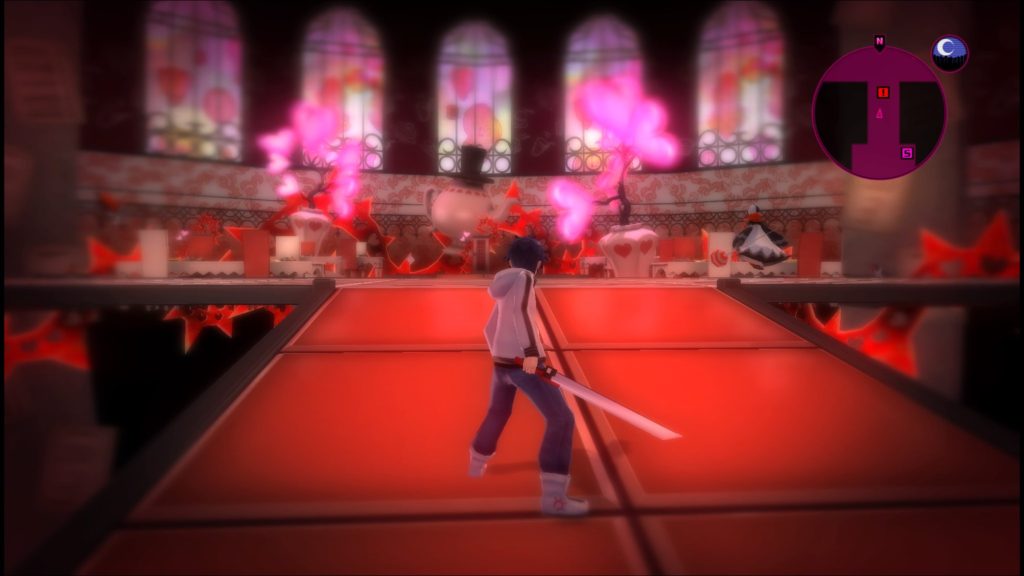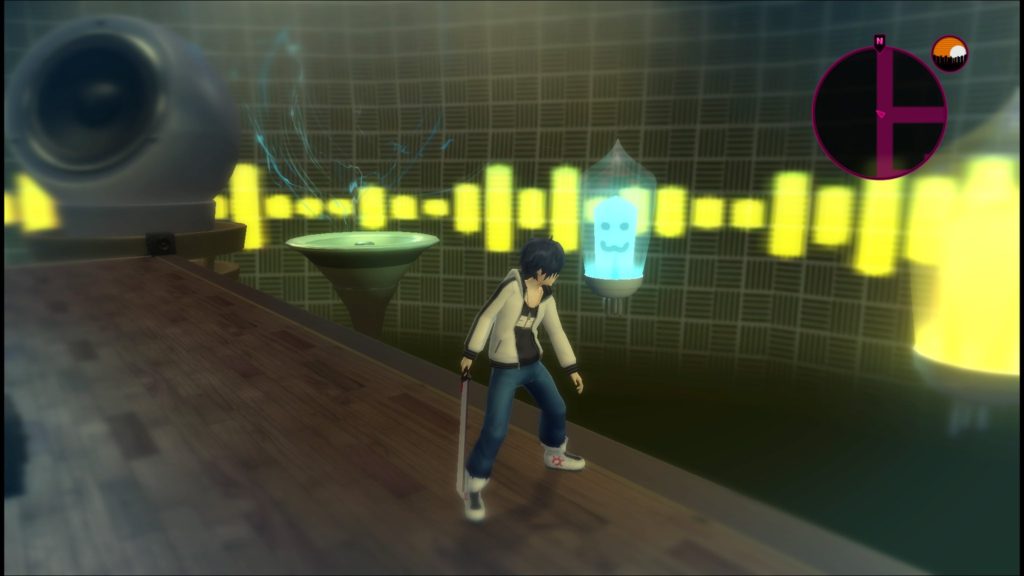More information from XSEED/Acquire
- Genre: ARPG
- Platform: PS4
- Also Available On: Vita
- Main Reason for Shelving: No reward grind
TL;DR
- Lots of unnecessary re-traversal of dungeons for no reward
- Gameplay is a lot different than previous title; Akiba’s Trip
- Despite differences, solid ARPG gameplay reminiscent of the Tales of series.
- Simple, but solid visual style with distinct dungeon designs
As the first RPG that Acquire has made, Akiba’s Beat is pulling ideas from other series in an attempt to provide some familiar gameplay, but in doing so it stumbled in the thing that can determine the quality of a lot of ARPGs and JRPGs; the grind between main story points. While this one shows a lot of potential for the studio to continue doing RPGs in the future, it just didn’t provide enough incentive to continue through to the end with so many other quality RPGs available.
For anyone that has played Akiba’s Trip, the most obvious difference here is the gameplay. Rather than being an action-heavy game reminiscent of a light-hearted Musou game, this is now very much a Tales of style ARPG. The battle system is solid, but definitely not doing anything original. Battles take place in a flat plane where the player moves side to side toward a targeted enemy, activating physical attack combos and skill attacks. They can dodge in any direction, and unlock movement from the side to side movement to reposition in 3D space. Yep, it’s pretty much a 1:1 copy of the battle system used in games like Tales of Vesperia, rather than the more free form systems in newer titles. It even brings in the AI tactics system to set the skill type, resource usage, and target priority of the Tails games. The fortunate thing is that this battle system still is extremely fun to play, and while fighting level appropriate monsters, is easily the high point of the game.
The 1:1 copy syndrome also extends to the story. The core story revolves around Akihabara being stuck in an endless Sunday loop (hello Groundhog Day) in which people’s delusions manifest in Akiba, causing shenanigans to occur (hello Persona 5). The main problem is that the story and characters just aren’t as good as Persona 5. The core cast are basically rigid anime tropes, covering things like overly happy idols, brooding NEETS, the always positive athletic girl, etc. The plot twists are telegraphed too hard, and the consequences of the cast’s actions are sort of brushed aside out of necessity. In general, the story works, but it’s not going to blow anyone away, particularly when it’s to some extent copying a phenomenally good game that literally just came out.
The unfortunate thing is that the story ended up being the main drag factor on progression. I put no reward grind as the shelving reason, but I don’t mean that in the typical JRPG fashion. I wasn’t grinding to get levels, because typically I was around a pretty appropriate level for the things I was fighting. As the story progressed, they forced you to retraverse the past dungeons repeatedly, typically all the way to the end room. However, XP gained scales significantly down as the level gap between the monsters and cast increased, so retraversing the dungeons ended up being more of an exercise of how many battles I could avoid, rather than continuing to push the entertaining battle system. This could have been fixed in any number of ways, whether allowing quick travel to story points, or even scaling up enemies to give players incentive to continue to fight in the dungeons they’ve already been in. In the end, the story forcing retraversal was the game’s downfall, as it provided a lot of slow down and no reward.
That said, the dungeon visual designs were another high point in the game. Like Persona 5, they took the concept of a person’s delusions quite literally, heavily theming the dungeon visuals around the person’s personality. They were always visually pleasing, and really hit a high mark for playing with bright colors and strong designs. Just for a quick couple of examples:
When the owner of the delusion was a cafe maid, the entire delusion was a twisted interpretation of what a maid cafe would look like.
For the audio hardware guy’s delusion, we got speakers, vacuum tubes, and visual equalizer’s in the skybox to fit the theme.
In general, Akiba’s Beat is a game that doesn’t necessarily do a lot of things that wrong, and isn’t that far from being a highly enjoyable game. The things it does right, visually and gameplay-wise, it really hits high marks for. Unfortunately, this is still an RPG, and the story failings immediately bring it down to the status of not worth finishing. Given Acquire’s past experience with action games (Tenchu, Way of the Samurai, Akiba’s Trip), the change to a more formal RPG structure definitely seems to have tripped them up a bit, but if they take the right lessons from what went wrong here, they may be on to something with the genre change in the future.




